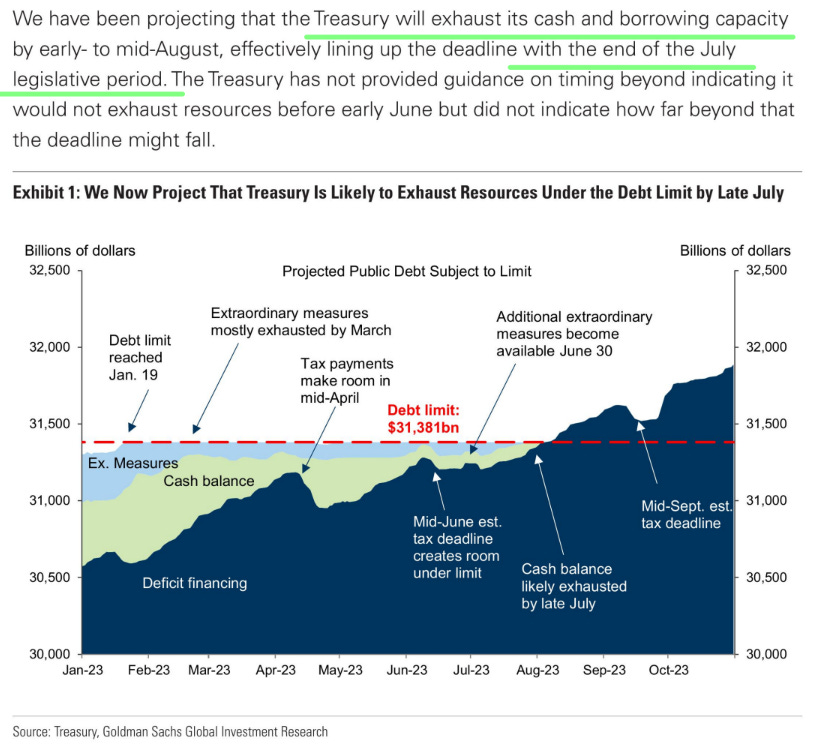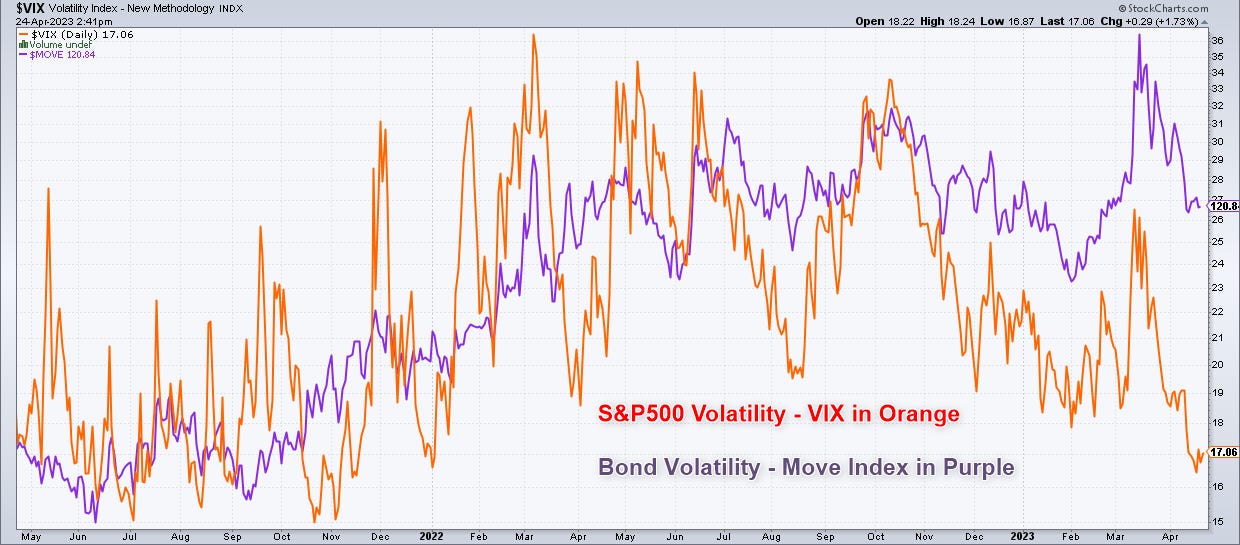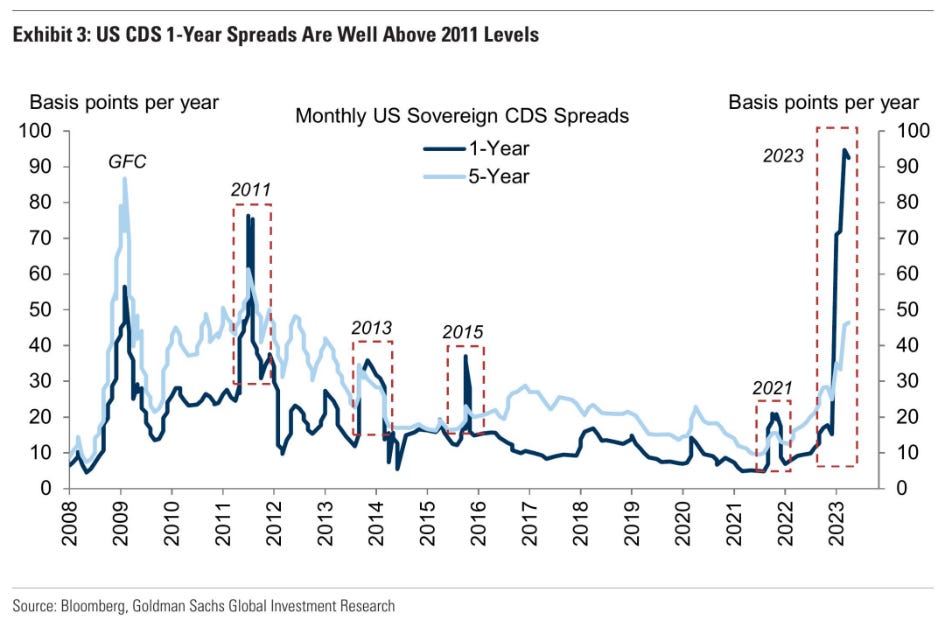The US Debt Ceiling Deadline
We're seeing US Sovereign CDS spreads rise to unprecedented levels. What does this mean?
There has been a lot of discussion about the US Debt Ceiling over the last couple of months. As we’re in the midst of US tax season, we’re likely to get a clearer picture of the deadline when all the tax receipts are in.
We’ve seen the US Sovereign CDS spreads rise in the last few months, signaling that it’s getting more expensive to insure US Sovereign risk. That however, does not mean that a default is imminent. In fact, that question cannot be answered at this stage and we really don’t know the answer with any degree of certainty.
The mostly likely scenario, of course, is that the US Government will not be allowed to default and what we’re seeing is Kabuki Theater, as Mayhem likes to put it.
This article examines the current situation, developments in the situation and what the market is telling. We will also examine some of the possible impacts on the market.
Tax Receipts will Determine the Deadline
According to report release by Goldman Sachs today, Tax Receipts are running -29% relative to last year. Their analysis suggests that this could put the debt limit deadline in July 2023. However, if the final level of tax receipts come out below -35%, the deadline could actually move up to June 2023. By tomorrow, April 25, the US Treasury should be done with 75% of the receipts and as we progress, we will know more.
If the Deadline moves up
Goldman Sachs predicts that the most likely outcome is that the deadline is late July 2023. This is when the US Treasury runs of out of funds. ⤵
However, the major problem is that if the tax receipts don’t come in as expected, the deadline may move to June. In this case, the Republicans will probably have to vote on a short-term extension, as we had seen in December 2022. This is not great because it simply means kicking the can down the road and ideally, they would not want to vote on this matter twice.
House Speaker McCarthy is using the debt ceiling vote as a bargaining chip in an attempt to reign in spending by approximately $4.5 trillion, but is still struggling to get the support he needs from his own caucus to pass the bill. He hopes to put the bill to a vote by Wednesday.
One other issue that may cause the deadline to move up is the available cash balance that the Treasury wants to have. The Treasury can’t allow the cash balance go to zero so, they would likely keep a buffer. Again, the assumption is that if they keep a $50B cash balance buffer, then the deadline may move up to end of June.
The Market remains Calm
We looked at the various aspects of the market. Thus far, the market does not seem to be fazed by the debt ceiling issue.
Bond markets are not pricing heightened risk around the deadlines - usually when the debt ceiling issue comes into play, there is a sell off in Treasuries with maturities that coincide with the deadline. This has not happened in any meaningful way.
Stock markets price it in options through puts. There’s not specific evidence on this either.
There is no meaningful increase in volatility. ⤵
US Sovereign CDS Spreads are still rising
The only discernible effect that we can see is the CDS spreads. They are not just rising but have surpassed the GFC and the previous Debt Ceiling debacle in 2011. We’re monitoring the one-year level here because that shows near-term worries.
Impacts on the Market
As I said earlier, we don’t think the US Government will default but, there are a few impacts on the market because of the “Kabuki Theater”, what we’ve already noted above.
Financial conditions tighten
Financial conditions tend to tighten meaningfully, creating havoc on the financial markets. When this happened back in 2011, financial conditions not only tightened but they also took the S&P500 down with them.
Companies with exposure to government contracts suffer
One obvious impact will be on companies with exposure to the government in terms of revenue. Thus far, there has been some softening in some of these names according to Goldman Sachs but, again it’s tough to say whether this is because the overall market has seen some softening.
Closing Thoughts
The situation with the debt ceiling is fluid and we will continue to cover updates, as and when they become available. At this point, we still need to get through all the tax receipts to have a definitive idea about the deadline. However, this is a good time to at least pause and understand the current situation.








Thanks for the article. If there's a risk of default, then would it make sense for FED to initiate a QE in order to raise cash and pay of a portion of debt?